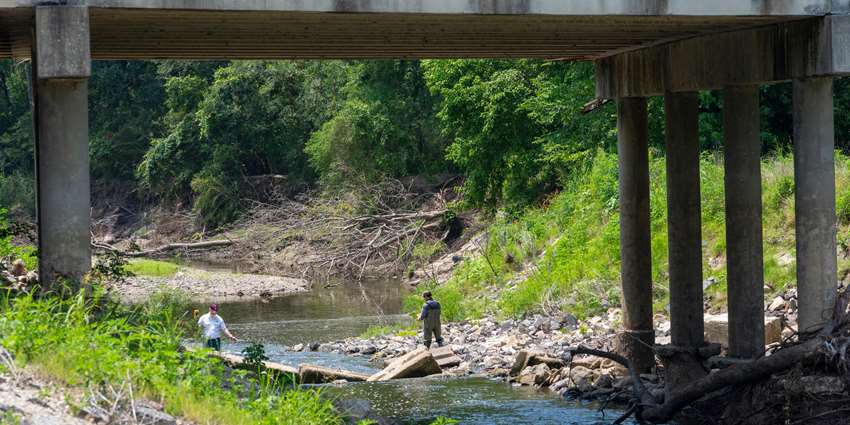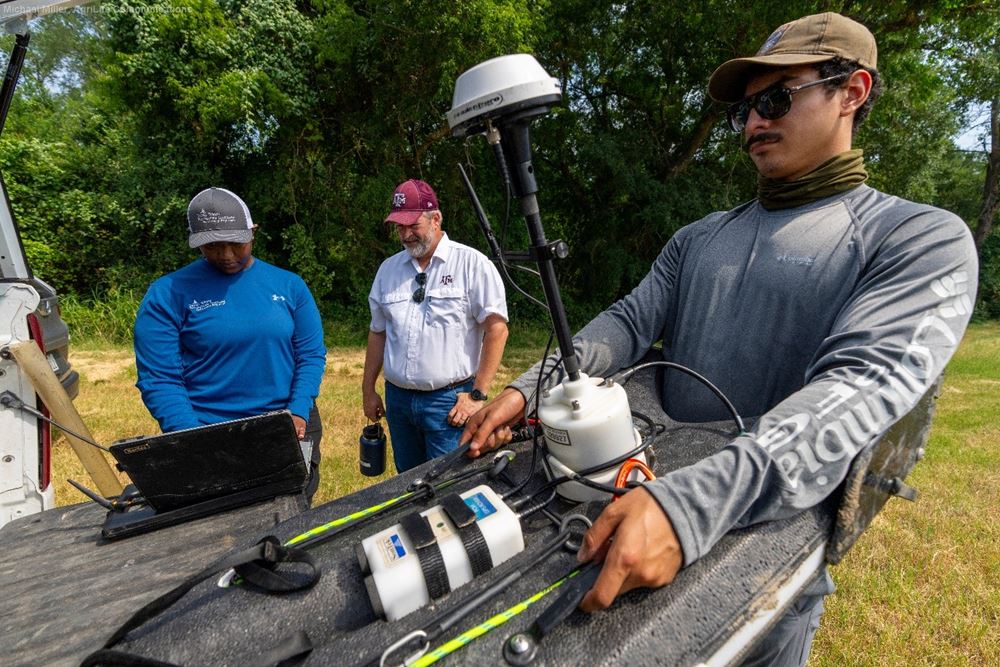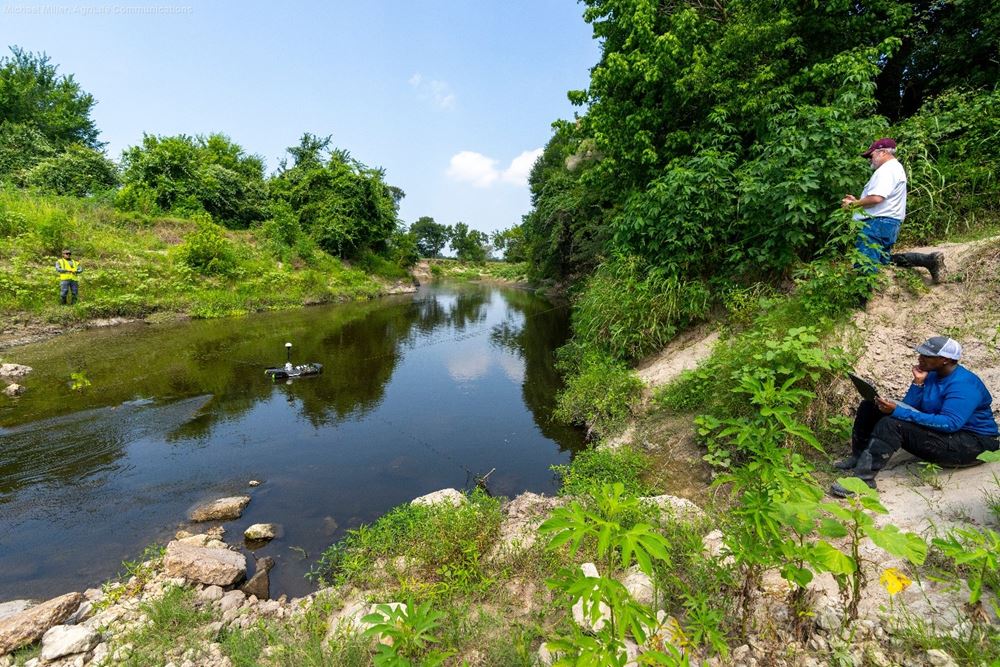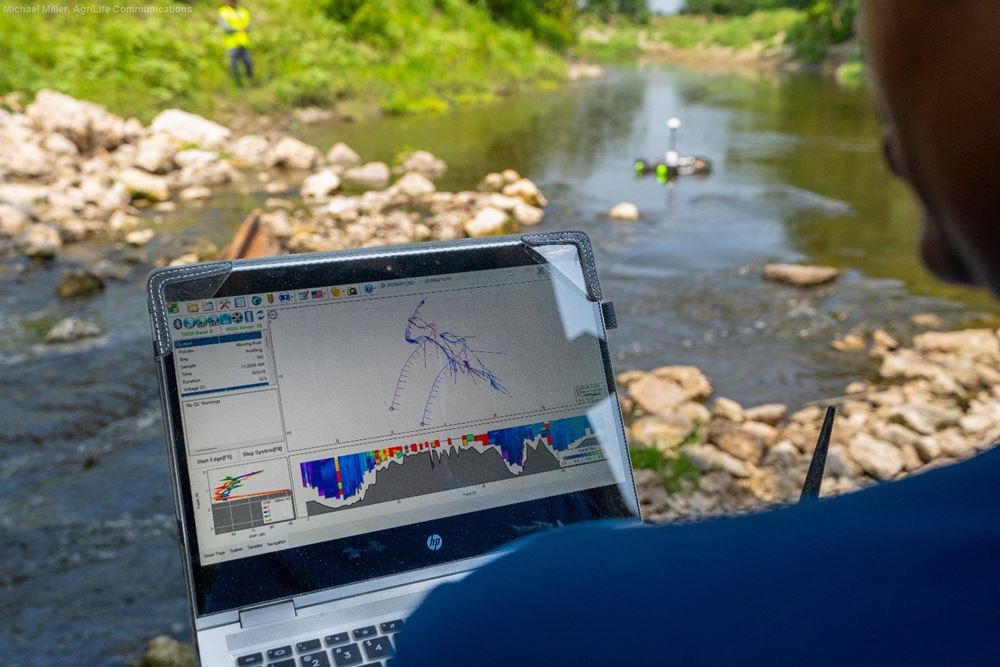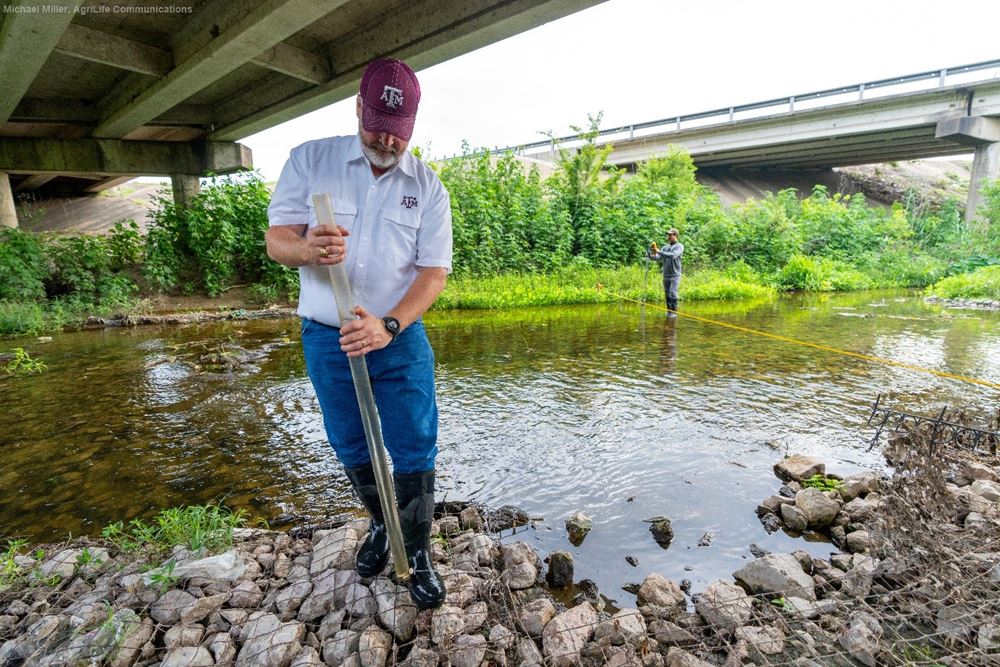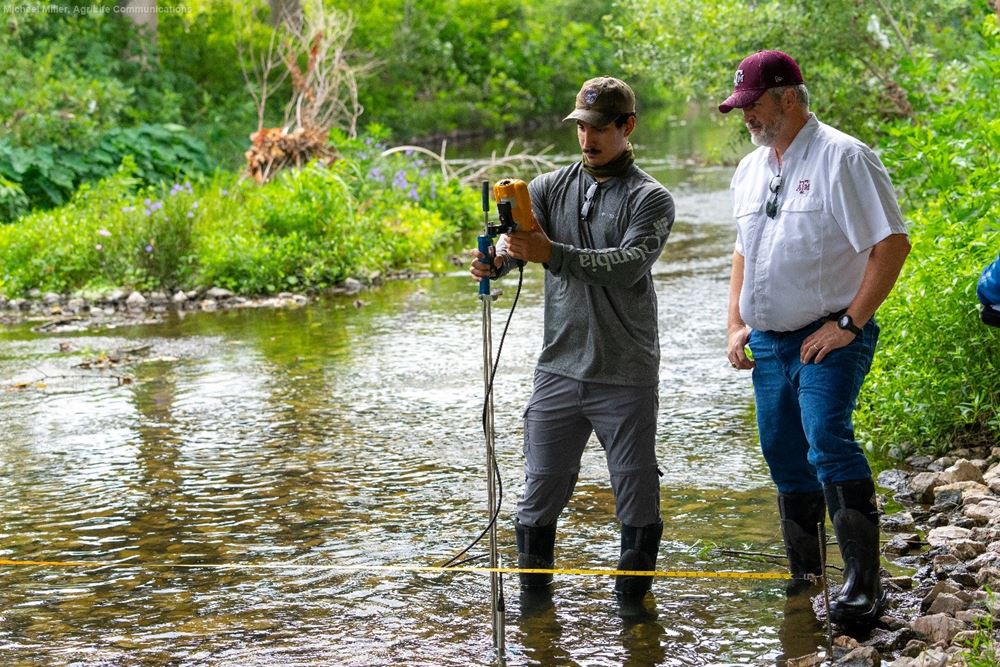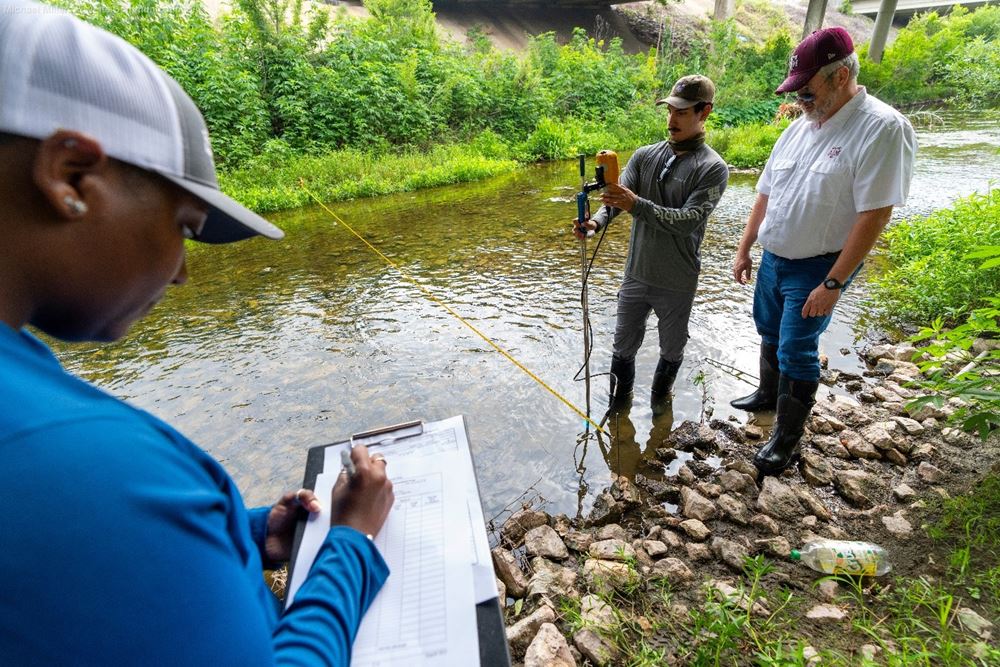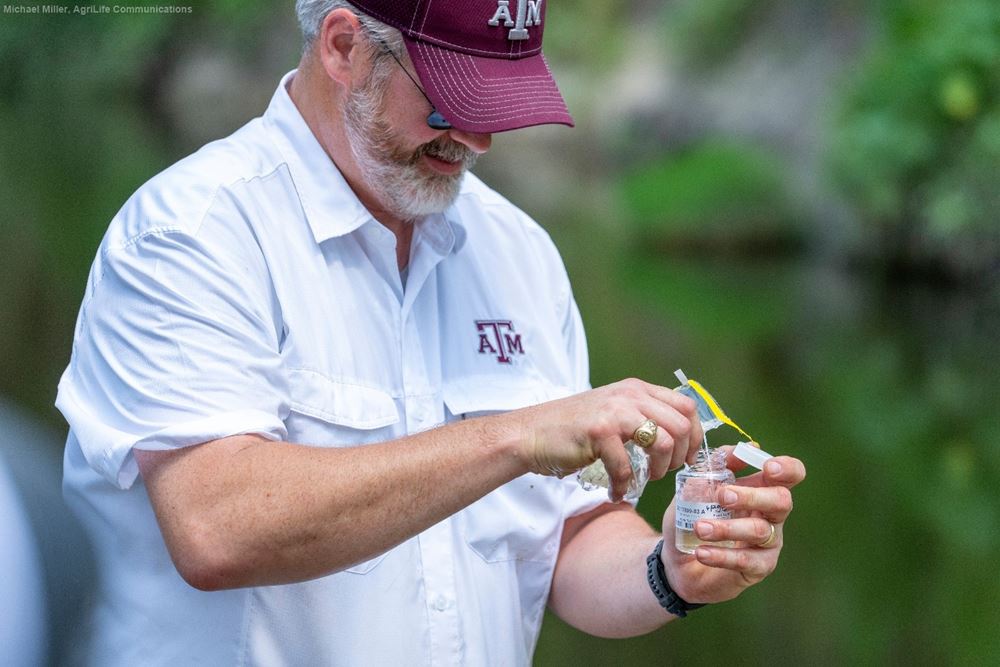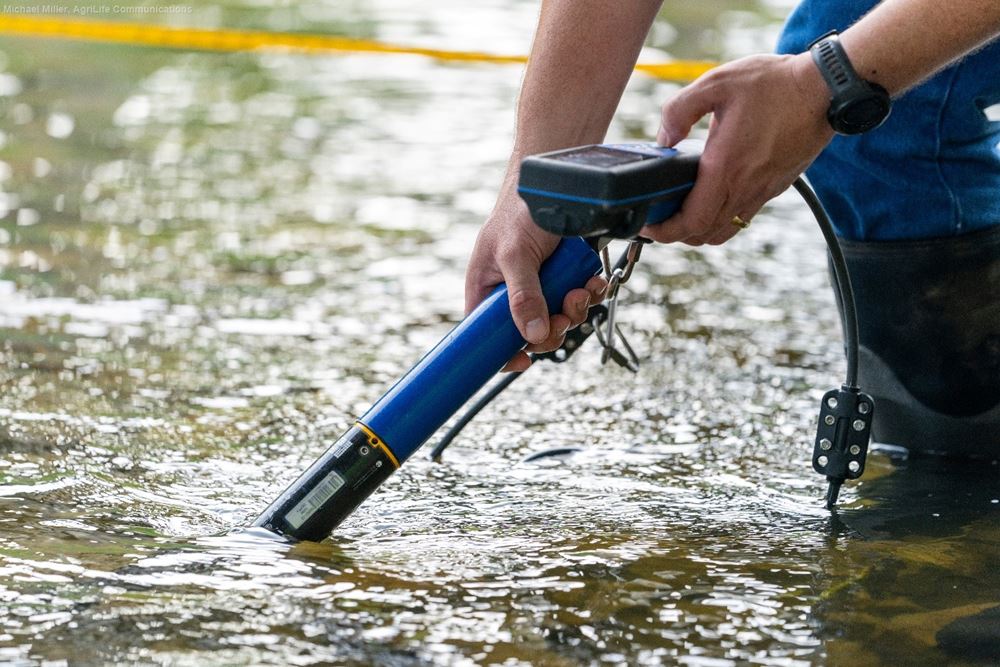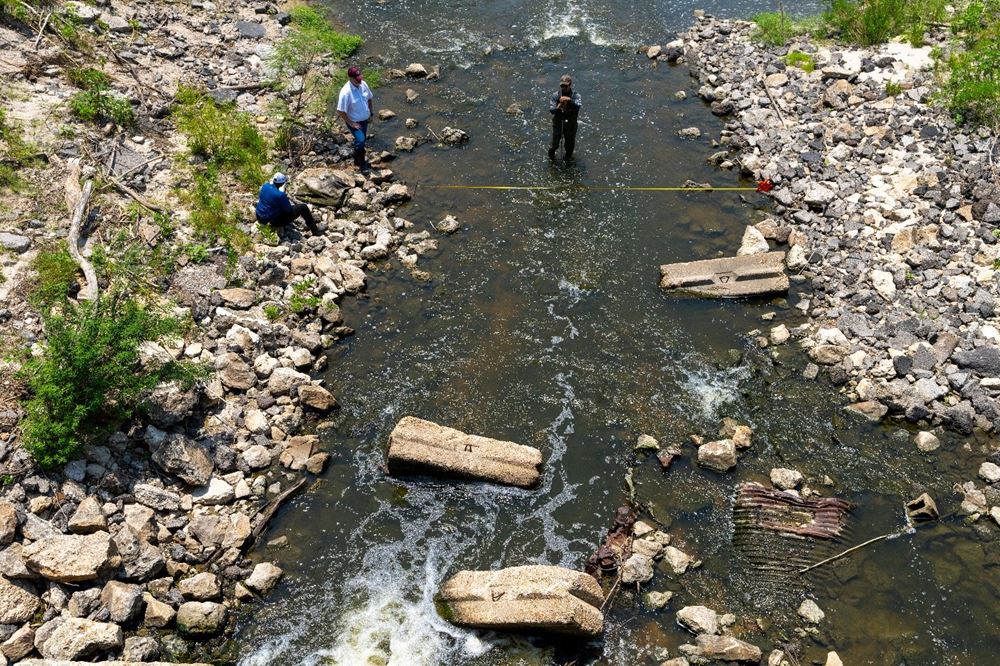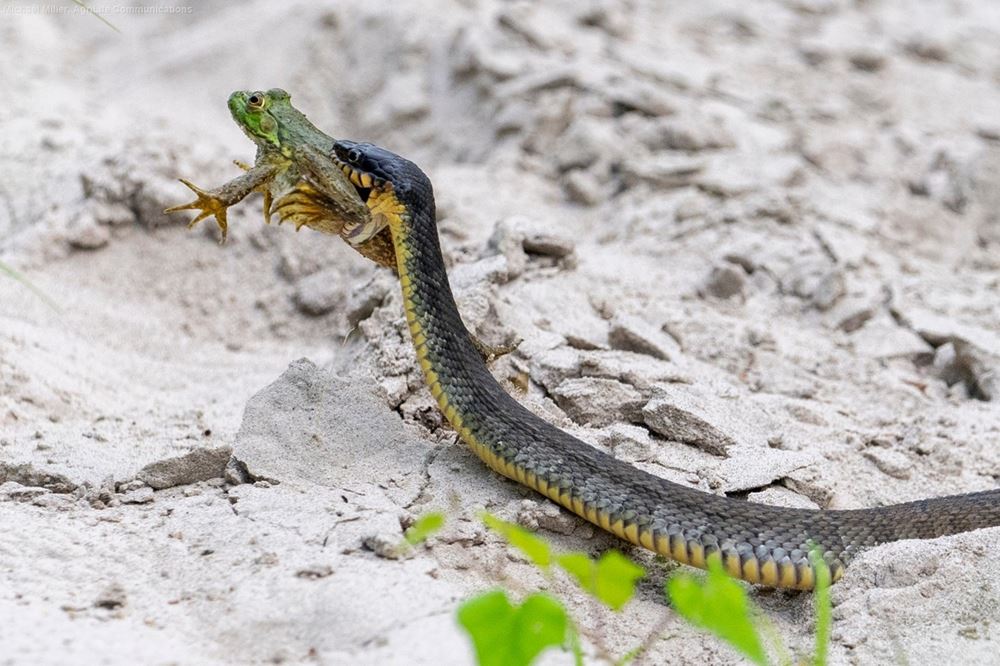What goes on when our water quality monitoring team goes out to conduct regular monitoring?
Michael Miller of Texas A&M AgriLife Marketing and Communications tagged along with one of our teams on a warm June day to photograph how it's done. At various locations along Carters Creek, this team performed regular water quality monitoring, observed conditions and collected water samples for testing.
Scroll through this photo essay to see what a typical monitoring trip looks like.
Graduate Research Assistant Norberto Barragan and the rest of the water team calibrate the m9 dopler boat gps system.
Michael Miller, AgriLife Communications
1 of 10
The water team using the boat to take measurements at stream cross section and collecting flow data.
Michael Miller, AgriLife Communications
2 of 10
River surveyor software showing real-time data being collected from the m9 dopler boat.
Michael Miller, AgriLife Communications
3 of 10
Research Specialist Ed Rhodes using a secchi tube to determine the transparency of the creek water.
Michael Miller, AgriLife Communications
4 of 10
Barragan and Rhodes using a flow tracker to measure stream flow and collect flow data.
Michael Miller, AgriLife Communications
5 of 10
Research Assistant Adriana Williams recording the velocity at each section the flow tracker collects data from.
Michael Miller, AgriLife Communications
6 of 10
Rhodes transferring collected stream water into sampled bottle which will be sent to a lab for testing.
Michael Miller, AgriLife Communications
7 of 10
Rhodes using a y-multi parameter sonde to collect in stream water quality data. The sonde is used to record ph, dissolved oxygen, specific conductivity and temperature.
Michael Miller, AgriLife Communications
8 of 10
The water team collecting flow data from a higher vantage point.
Michael Miller, AgriLife Communications
9 of 10
Sometimes the water team gets to see nature in action!
Michael Miller, AgriLife Communications
10 of 10

